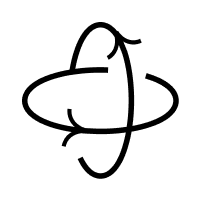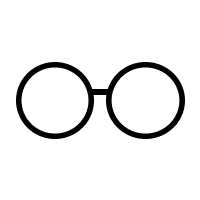Meet the collection: 'DOKA'

Exhibition view ‘DOKA’, 2023, M Leuven, photo: We Document Art for M Leuven
Meet the collection
DOKA
‘DOKA’ is a collection presentation that has been on display at M since late last year. At the head is guest curator Geert Goiris, the Belgian photographer who in 2013 had a solo exhibition at the museum.

Exhibition view ‘DOKA’, 2023, M Leuven, photo: We Document Art for M Leuven
The contemporary art in ‘DOKA’ invites you to take a fresh look at that which seems familiar and known with a focus on pleasure as well as the necessity of looking. Here, Geert Goiris talks about some of the works on display from his viewpoint.
Most artworks are stored in dark depots and rarely see the light of day. To Goiris, the exhibition is a space where artwork light up from the darkness – just like in a darkroom (‘darkroom’), that magical place where analogue photographs are developed and where images are created.
Lili Dujourie
‘Passion de l’été pour l’hiver’, video without sound, black-and-white, 15 min, 1981, Cera collection at M Leuven
“This monochrome video, shot in Ostend, was the starting point for the collection presentation. It is greyish and not particularly sharp. The recording was done in one go, without interruptions. What we see is simple and basic: Dujourie does not indulge in virtuoso camera angles or movements. But the deceptive simplicity does not take away from the radicalness of this artwork. The measured position of the camera, and especially how Dujourie handles it as artist, as a model (the woman in the picture) and spectator, give this work its power.”
“In this piece, the artist shows her fascination with the suspended moment. Her character hardly develops at all. Time slips by without anything substantial changing. I watch with fascination how she evokes such elegance and richness of feelings with just her body, a room and a still video camera. Dujourie’s appearance is not a show. The body performs nothing nor is it under any pressure to produce or consume. It is an empty body, perhaps bored, but it remains authentic, unruly, sensual and above all autonomous.”
“‘Passion de l’été pour l’hiver’ outlines the longing for the unattainable. Something that is far away from us attracts – impossibility is never an obstacle in love stories. This body may seem passive, but the title suggests passionate desire. That inner storm remains invisible on the outside.”

‘Passion de l’été pour l’hiver’ still, Lili Dujourie, 1981, Cera-collectie bij M Leuven © de kunstenaar & Argos Centre for Audiovisual Arts
Ann Veronica Janssens
‘Corps Noir’, plexiglas, 1994
“This ‘black body’ is a bowl-shaped panel made from black Plexiglas that reflects the world upside down. The object is an elusive shapeshifter where the perspective is unreliable and the materiality dubious. In profile, we can still estimate the depth of this wall sculpture, but the front aspect appears infinite. It is unclear whether we are staring into a concave or convex lens. This hard-to-define object is shiny and at the same time transparent, a black mirror that might as well be a solid piece of glass. Ann Veronica Janssens’ oeuvre is a search for the perception of light and lightness. Her works are fascinating explorations of the intangible, the boundless.”

‘Corps Noir’, Ann Veronica Janssens, plexiglas, 1994 © de kunstenaar, foto: Galerie Micheline Szwajcer
Paul Casaer
‘Tropical Archive’, iron and lacquer, 2020, Flemish Community collection at M Leuven
“The disproportionate scale of the newspaper stand and the stylised leaves from tropical plants feel strangely familiar. As if the furniture rises above itself and becomes a compelling monument to other worlds. The postwar domesticity – in which indoor plants and illustrated magazines represented a comfortable, connected way of life and the first fledgling steps in a globalised existence – is gently undone by the uncanny scale and title. Despite their cultural diversity and paradisiacal flora and fauna, we have given the tropics all sorts of unfavourable connotations. Tristes tropiques, our unsavoury colonial history, malnutrition and terrible diseases, we get them from magazines.”

‘Tropical Archive’, Paul Casaer, ijzer en lak, 2020, Collectie Vlaamse Gemeenschap bij M Leuven © de kunstenaar
Dirk Braeckman
‘F.W.-H.P.-21.’, ultrachrome inkjet print, 2020, Flemish Community collection at M Leuven
“This large analogue photograph shows a detail of a mountain landscape. However, reflections in the image tell us that it is a reproduction, a photograph of an image of the landscape. The pictorial mountain is a second-hand version, a quote. The emphasis shifts from the landscape to the nearby, to a print on thumbed paper, to the reflected torch. The original image is violated and the scratches, damages and reflections have been accentuated.”
“The viewer’s gaze is drawn by the presence of the photographer, his camera and the artificial light, much more than by the subject. Where that light touches a surface, it creates a contact wound, forensic evidence of an encounter between light and material. The explicit spot of light left by the flash undermines the idea of the photograph as a direct representation of reality.”

‘F.W.-H.P.-21.’, Dirk Braeckman, ultrachrome inkjetprint, 2020, Collectie Vlaamse Gemeenschap bij M Leuven © de kunstenaar, foto: Zeno-X
Gintautė Skvernytė
‘Corolla’, 16mm film, 3 min, 2019, Cera collection at M Leuven
“Gintautė Skvernytė once started working with paraffin, a malleable material that you can change endlessly by printing on it or by inking. That experience led her to analogue colour film, another sensitive material capable of capturing ephemeral impressions. ‘Corolla’ is her first 16mm film and depicts seven close-ups of eyelids with petals stuck to them. The involuntary movement of the eyes makes the petals flutter like butterflies. The film is projected in a loop and has sculptural properties with tactility, materiality – the physical support of the film is part of the viewing experience – and dynamism. We never get to see the full faces and there is little scope for recognition or identification. The focus is how the vegetable and the human touch each other, and how a subtle intertwining occurs on the border of those two worlds.”

‘Corolla’, Gintautė Skvernytė, 2019, Cera-collectie bij M Leuven © de kunstenaar, foto: © Elias Derboven voor M Leuven

Exhibition view ‘DOKA’, 2023, M Leuven, photo: We Document Art for M Leuven




